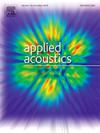SepLocNet: Multi-speaker localization with separation-guided TDOA estimation in wireless acoustic sensor networks
IF 3.4
2区 物理与天体物理
Q1 ACOUSTICS
引用次数: 0
Abstract
Time difference of arrival (TDOA)-based multi-speaker localization allows three-dimensional localization using a low-cost wireless acoustic sensor network (WASN). However, two obstacles hinder accurate localization of multiple speakers. Firstly, the performance of existing multi-speaker TDOA estimation methods suffers from reverberation and noise. Secondly, the correct association of TDOA estimates and speakers across multiple sensor nodes needs to be solved. To address these issues, we develop a hybrid approach that combines the excellent performance of deep learning-based TDOA estimation with the interpretability of signal processing-based TDOA association, referred to as SepLocNet. In each node of a WASN, a speech separation-guided algorithm is used to accurately estimate multi-speaker TDOAs and construct auxiliary association features in reverberant noisy environments. In the fusion center, the similarity of the auxiliary association features is exploited to readily define the cost of associating TDOA estimates from multiple nodes to the same speaker. With these association costs, an efficient algorithm is derived to solve the TDOA association problem based on difference of convex functions programming. Finally, the locations of multiple speakers are readily estimated by imposing a well-established single-source localization method on the estimated TDOA associations. Experimental results show the proposed SepLocNet achieves much higher accuracy in terms of multi-speaker TDOA estimation and position estimation than existing signal processing-based algorithms. Moreover, the computational time at the fusion center is comparable.
求助全文
约1分钟内获得全文
求助全文
来源期刊

Applied Acoustics
物理-声学
CiteScore
7.40
自引率
11.80%
发文量
618
审稿时长
7.5 months
期刊介绍:
Since its launch in 1968, Applied Acoustics has been publishing high quality research papers providing state-of-the-art coverage of research findings for engineers and scientists involved in applications of acoustics in the widest sense.
Applied Acoustics looks not only at recent developments in the understanding of acoustics but also at ways of exploiting that understanding. The Journal aims to encourage the exchange of practical experience through publication and in so doing creates a fund of technological information that can be used for solving related problems. The presentation of information in graphical or tabular form is especially encouraged. If a report of a mathematical development is a necessary part of a paper it is important to ensure that it is there only as an integral part of a practical solution to a problem and is supported by data. Applied Acoustics encourages the exchange of practical experience in the following ways: • Complete Papers • Short Technical Notes • Review Articles; and thereby provides a wealth of technological information that can be used to solve related problems.
Manuscripts that address all fields of applications of acoustics ranging from medicine and NDT to the environment and buildings are welcome.
 求助内容:
求助内容: 应助结果提醒方式:
应助结果提醒方式:


